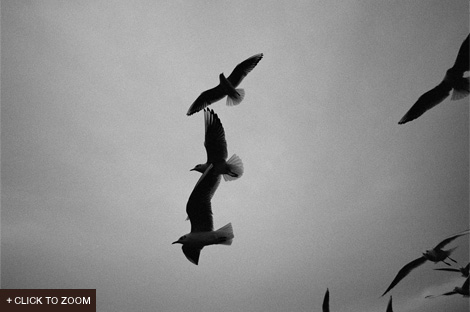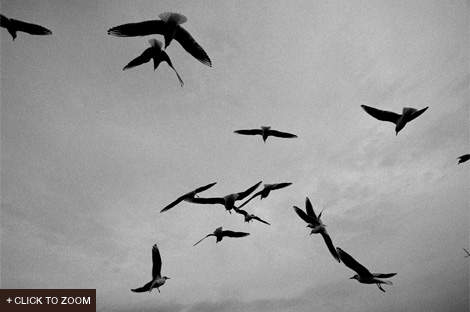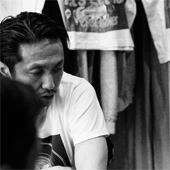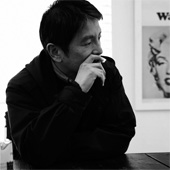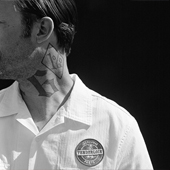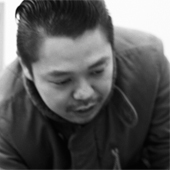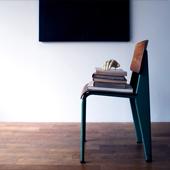

リチャード・バックの小説『かもめのジョナサン』をテーマにしてカモメを撮り始めたのがそもそもの発端です。鳥は本当に昔から撮っているんですが、7〜8年前から35mmのモノクロフィルムで撮影することをライフワークに始めました。旅やロケの時に、ライカのカメラを持っていることが多いのですが、気づいたら鳥を撮ってしまっているんですよね。だから、ファッションの写真よりも人物を撮る事よりも、鳥のほうがかなり前から撮っています。
人間にとって鳥は好奇心の象徴というか、なにか自分の持ってないものの象徴のような気がします。写真史だけでなく絵画や文学史でも鳥をモチーフにしたものって多いと思うんですが、何かもう絶対的なモチーフのような気がしますね。ずっと撮っていても飽きない、どんなにコンポジションしても収まらない感じが面白いんですかね。

当時は、一枚の写真の中になるべく多くの光の情報を詰め込みたかったんです。それは要素ということではなくて、自分がシャッターを切っているその場所と時間の同じ光を、できるだけたくさんフィルムに受けた写真を撮りたい、という感覚がありました。レンズを使わないピンホール・カメラを使っていたこともあって、それを使うと特性としてレンズを通してない光が入ってくるし、自分の皮膚で受けているのと同質な光をフィルムに焼き付けられて、まるで自分がそこにいた時に浴びていた光の集約みたいな感覚に魅力を感じていたのかもしれません。
18歳の頃、ピンホール・カメラを使っていたアメリカ人の写真家に偶然出会って、その人が日本国内で行うワークショップを手伝ってほしいということで携わったのがきっかけです。その時に彼が面白い話をしていたんですよ。「実はどんなに優れたレンズでも直線って表現できない。でも、ピンホールカメラだったらできる」と。そんな屈折の特性だったり、光をフィルムに直接レンズ無しで取り込んだりするそのコンセプトが面白いなと思って。最初は11×14インチの大判カメラを自分で木で作って、いろんな土地の水平線だけ撮って回りました。一枚3時間とか6時間とかの長時間露光でした。そこから派生していろいろと試すようになって。当時はまだ若かったので、「なんだろう?」って頭でっかちに考えていた時期でもあったんですね。その時に、感覚的な気持ちがどうすれば写真に残せるのか?とか、自分が気持ちいいと思うものが残るのかな?と思って。じゃあどうやって表現すればいいんだろう? って考えていたりしていたのかもしれませんね。そう考えると、今は写真と自分との距離が近くなって、だいぶ瞬間に込められるようになったのかも。頭とカメラの距離。抽象的な話ですいません…(笑)。
結局、人を撮るのも、モノを撮るのも、ましてや風景を撮るのも、根本的には同じだと思っているんです。被写体がどうであろうと、その前にカメラを持った自分が立っているってことですね。それはファッションを本気で撮り始めた頃に思いました。感情移入して自分の思ったものが“撮れた!”と思う瞬間は、何を撮っていても変わらないです。例えば、鳥を撮っている時、想像できない鳥の動きに対して反射的にシャッターを切ったりする。その感じが人物を撮ってる時の「間」とか「リズム」や「呼吸」に似たジャムセッションみたいな感覚があります。ある意味、写真の基本的な部分の話ですね。
相手があってこそですね。そこが写真的というか、美しい瞬間を切り取ろうとしているんです。それは自分を凝縮している瞬間なのかもしれないし、例えば、解放されたい自分の願望みたいなものを投影しているのかもしれないですよね。

The novel “Jonathan Livingston Seagull” by Richard Buch was how I began photographing seagulls. I have been taking pictures of birds in general for quite sometime, but since seven or eight years ago I began using a 35mm black-and-white film as my lifework. For on-locations and trips, I frequently carry my Leica camera, and I would realize that I would be photographing the birds. So before my fashion photography and portraits, I have been photographing birds for quite a while.
I think of a bird as a symbol of curiosity to us humans, or symbolizing something we don’t have. Not only in the history of photography, birds have been used as a motif in literature and fine art; I think of them as almost an absolute motif. I never get bored taking pictures of them, and they never get stay in one composition --- maybe that’s what makes them so interesting.
At the time, I wanted to cram as much information of light as possible in one picture. And I don’t mean this by elements, but I had this feeling of wanting to take pictures that reflected the light of the time and place I released the shutter. There were times I would also use a pinhole camera, which does not require a lens. The unique quality of this is that I get light that does not go through the lens, the same light that I felt on my skin gets imprinted onto the film; I was excited by the sense that it was though I was gathering the same light I was basking in at the time.
When I was 18 years old, by coincidence I met an American photographer who used pinhole cameras, and how I got started was when he asked me to assist in him the workshops he would host in Japan. He shared an interesting story to me: “In actuality, no matter how great the lens is, we can’t express a straight-line. But with a pinhole camera, we can.” Those special qualities of the refraction, the concept of capturing the light directly to the film without any lens – that was what I found interesting. First I made a pinhole camera of 11inches by 14 inches out of wood, and I went around photographing the horizon from various locations. It took an exposure of 3 to 6 hours per picture. Deriving from that, I started to experiment. I was still young at the time, so I would foolishly question myself, “What is photography?” During that time, I would consider how I could represent the sense of feeling in my photographs; how I can leave behind something I could be proud of. And then I would try and figure out how exactly I would represent that. Thinking back, the distance between photography and myself is now closer than ever and I think I am able to fully take in a moment; the distance between one’s mind and a camera --- I apologize for my abstract ramblings…(laughs)
In the end, taking picture of people, still life, or even landscape, at a fundamental level I believe they are all the same. Whatever the subject is, there I am standing in front of them with the camera. I felt that way when I realized that when I first started taking fashion photography seriously. The moment I feel “I got it!” or when I am able to capture what I had envisioned, this does not change by what I am photographing. For example, when I am photographing birds, I release the shutter by reflex so I can capture the unexpected movement of birds. This feeling is similar to when I am photographing people; its “moment,” “rhythm,” and “breathing” is like a jam session. To an extent, this perhaps is the overlying concept of photography itself.
This is because of the photographed feature. I feel as though that’s the characteristic of photography – trying to isolate the beautiful moment. It could be the moment where I am condensing myself, or for example I am projecting something like my desire to be freed.













